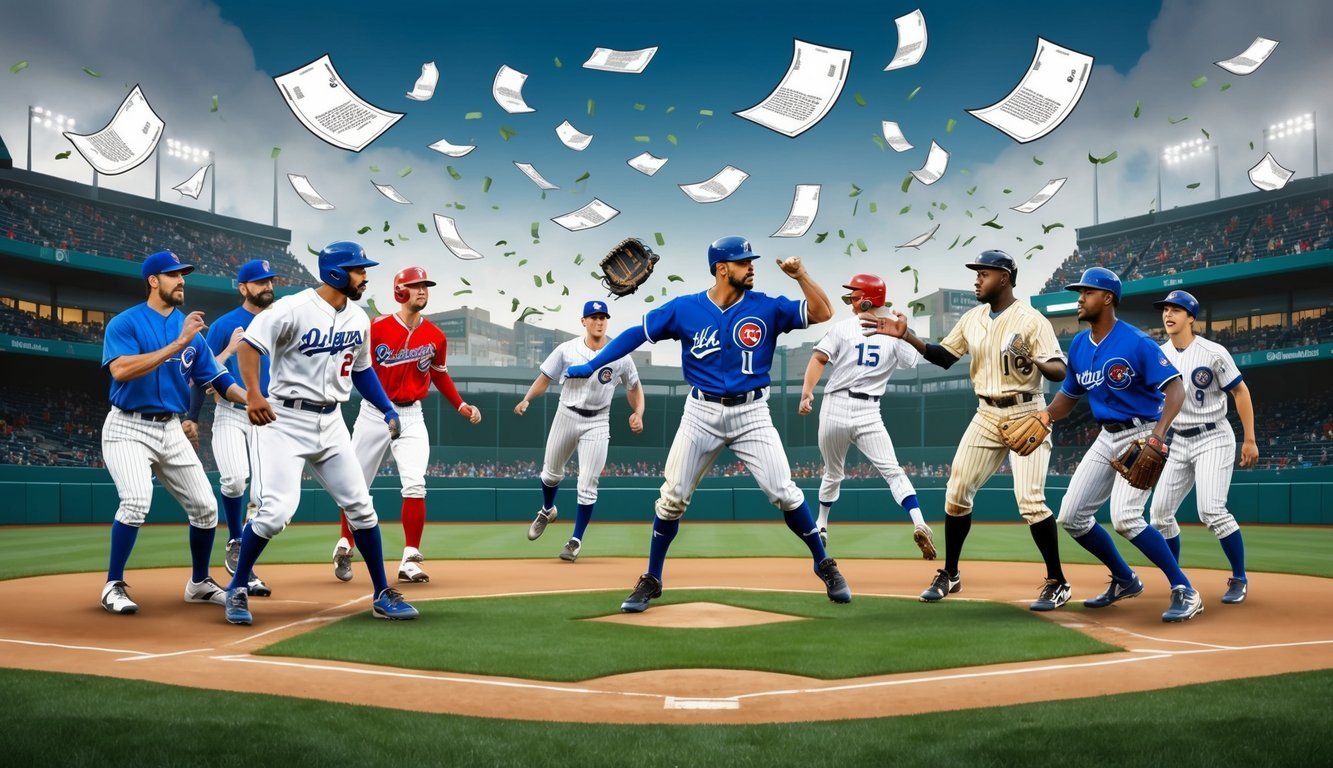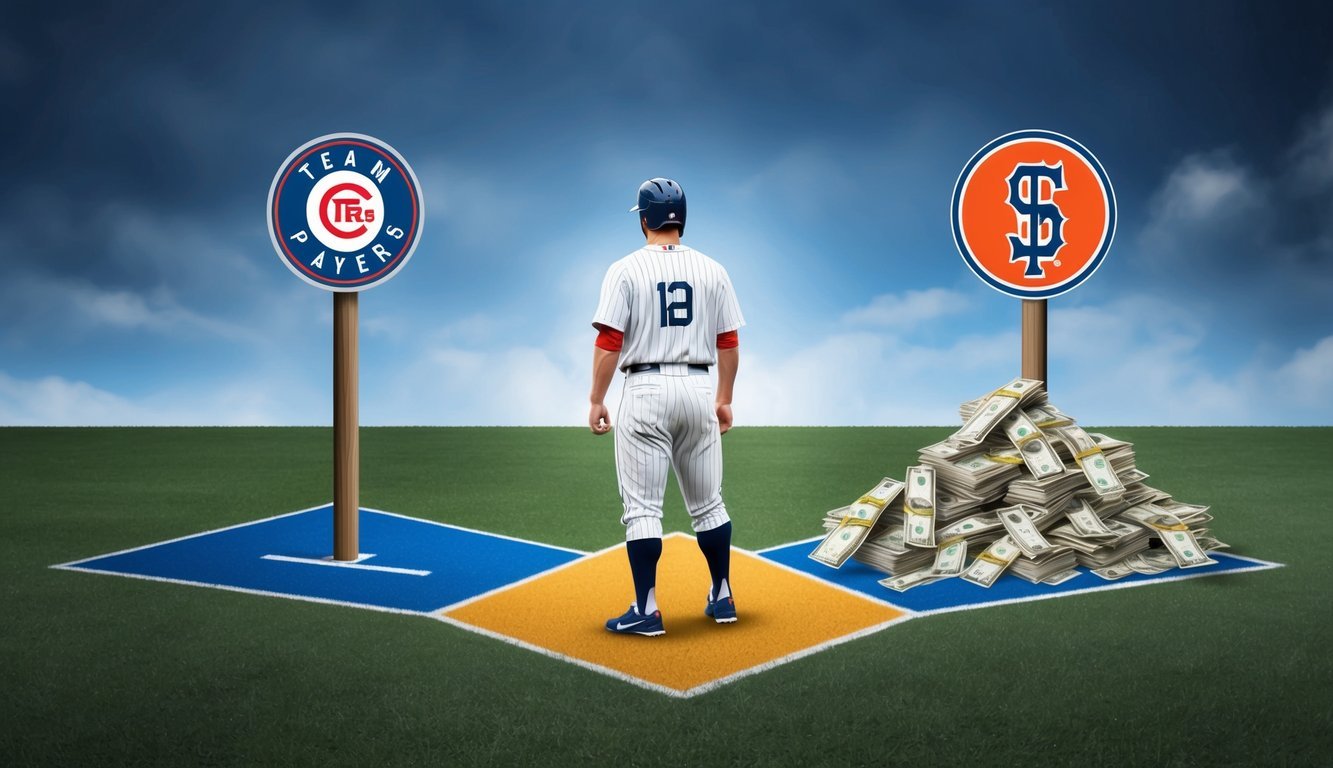Free agency revolutionized Major League Baseball in the 1970s, forever changing the dynamics between players and team owners.
The concept emerged from a series of legal battles and negotiations, culminating in the landmark Messersmith/McNally Arbitration of 1975.
This decision effectively dismantled the long-standing reserve clause, granting players unprecedented freedom to negotiate contracts with any team after their existing agreements expired.
The introduction of free agency sparked a new era in baseball economics.
Players like Catfish Hunter and Reggie Jackson became early beneficiaries, commanding multi-million dollar contracts that were unheard of in previous decades.
Teams scrambled to adapt to this new landscape, realizing that strategic signings could quickly transform their rosters and fortunes.
Free agency’s impact extended beyond individual player contracts.
It reshaped team-building strategies, altered the balance of power between small and large market clubs, and significantly increased player salaries across the board.
History of Free Agency
Free agency revolutionized baseball, giving players more control over their careers and dramatically changing team dynamics.
The path to free agency involved legal battles, player challenges, and landmark decisions that reshaped the sport.
These changes not only empowered athletes but also led to significant shifts in how teams approached player recruitment and retention.
Moreover, technological advancements in baseball have further influenced this evolution by providing teams with data analytics that help them assess player performance and make informed decisions.
As a result, the game has experienced both an economic and strategic transformation, enabling clubs to build competitive rosters more efficiently than ever before.
Roots of the Reserve Clause
The reserve clause bound players to their teams indefinitely, limiting their ability to negotiate contracts or change teams.
This system, in place since the 1880s, gave team owners significant power over players’ careers and salaries.
Teams could renew contracts yearly without player consent, effectively tying athletes to one organization for life.
This arrangement persisted for decades, despite growing player dissatisfaction.
The clause’s restrictive nature became increasingly controversial as players sought more rights and better compensation.
Curt Flood’s Challenge and Flood v. Kuhn
Curt Flood, a star outfielder, became a pivotal figure in challenging the reserve clause.
In 1969, he refused a trade from the St. Louis Cardinals to the Philadelphia Phillies.
Flood’s stance led to the landmark Flood v. Kuhn case in 1972.
He argued that the reserve clause violated antitrust laws and compared it to a form of slavery.
Though Flood ultimately lost his case in the Supreme Court, his courageous actions paved the way for future challenges and raised awareness about players’ rights.
The Seitz Decision and Andy Messersmith
The breakthrough came in 1975 with pitchers Andy Messersmith and Dave McNally.
They played the 1975 season without signing new contracts, challenging the perpetual nature of the reserve clause.
Arbitrator Peter Seitz ruled in their favor, declaring them free agents.
This decision, known as the Seitz Decision, effectively ended the reserve clause era.
MLB initially resisted but eventually accepted the ruling.
In 1976, the first class of free agents entered the market, marking a new era in baseball economics and player movement.
Impact on Teams and Players

Free agency fundamentally altered the dynamics between baseball teams and players.
It shifted power towards players, reshaped contract negotiations, and influenced competitive balance across the league.
Changes in Player Contracts
Player contracts saw dramatic changes with free agency.
Salaries skyrocketed as teams competed for top talent.
Multi-year deals became common, offering players long-term security.
Contract lengths increased, with some stars securing 10-year agreements.
Performance-based incentives and opt-out clauses gained popularity.
These gave players more control over their careers.
Salary arbitration emerged as a key tool for eligible players.
It allowed them to negotiate raises based on performance comparisons.
Economic Dynamics for Teams
Free agency transformed team finances.
Payrolls grew substantially as owners invested heavily in star players.
Small-market teams faced challenges competing with wealthier clubs for top free agents.
Revenue sharing and luxury taxes were introduced to address financial imbalances.
Teams focused more on developing young talent to control costs.
The trade market evolved, with pending free agents becoming valuable commodities.
Teams could acquire prospects by dealing stars nearing free agency.
Competitive Balance and Pennant Races
Free agency impacted competitive balance across MLB.
Some argued it allowed rich teams to “buy championships.” Others saw it as a way for struggling franchises to quickly improve.
Pennant races became more unpredictable.
A key free agent signing could dramatically shift a team’s fortunes.
The Winter Meetings gained importance as a hub for major transactions.
Player movement between rivals added drama to established matchups.
It became common to see stars face their former teams in crucial games.
Legality and the Role of Arbitration
The introduction of free agency in baseball involved complex legal processes and arbitration decisions.
These elements reshaped player contracts and fundamentally altered the sport’s labor landscape.
The Role of Arbitrators
Peter Seitz played a pivotal role in baseball’s free agency revolution.
As the designated permanent arbitrator under the MLB’s basic agreement, Seitz made a landmark decision in 1975.
His ruling effectively dismantled the “reserve clause” that had long bound players to their teams.
The Seitz Decision, also known as the Messersmith/McNally Arbitration, granted players the right to become free agents.
This dramatically shifted the balance of power between players and team owners.
Arbitrators like Seitz interpreted existing agreements and made binding decisions that shaped the future of player contracts.
Legal Landscape of Baseball Contracts
Before free agency, MLB’s reserve clause severely restricted player movement.
This system faced legal challenges throughout the early 1970s.
The 1972 Flood v. Kuhn Supreme Court case set the stage for future changes, though it didn’t immediately overturn the reserve clause.
The legal battles culminated in March 1976, delaying negotiations on a new Collective Bargaining Agreement (CBA).
The expired CBA needed updating to define the workings of free agency.
Team owners found themselves in a position where they had to bargain with players on new terms.
This shift required a complete overhaul of baseball’s contract system.
The new CBA had to balance player freedom with team stability.
It introduced concepts like salary arbitration, which became a key feature of MLB’s new labor relations framework.
Significant Free Agency Cases

Free agency in baseball was shaped by pivotal cases that redefined player-team relationships.
These landmark decisions paved the way for the modern free agent system in Major League Baseball.
The Messersmith Case
Andy Messersmith and Dave McNally challenged baseball’s reserve clause in 1975.
This clause bound players to their teams indefinitely.
The players argued this was unfair and limited their career options.
An arbitrator ruled in their favor, effectively ending the reserve clause.
This decision opened the door for true free agency in baseball.
Players could now negotiate with any team after their contracts expired.
The ruling sent shockwaves through the sport.
Teams suddenly faced the prospect of losing star players to other clubs.
It shifted the balance of power towards the players, giving them more control over their careers.
Gene Tenace and Type A/B Free Agents
Gene Tenace became one of the first major free agents in 1976.
His signing with the San Diego Padres highlighted the new opportunities for players.
MLB soon implemented a system of Type A and Type B free agents.
This system aimed to compensate teams that lost valuable players to free agency.
Type A free agents were considered more valuable.
Teams signing them had to give up draft picks to the player’s former team.
Type B free agents required less compensation.
This classification system influenced team strategies in free agency.
It added complexity to the market, as teams weighed the costs of signing top talent against potential long-term impacts on their draft positions.
Modern Free Agency and Its Evolution

Free agency in Major League Baseball has undergone significant changes since its inception.
The system continues to evolve, shaping how teams acquire talent and players navigate their careers.
Collective Bargaining Agreements
MLB’s collective bargaining agreements have refined free agency rules over time.
The luxury tax, introduced in 1994, aims to balance team spending.
This tax penalizes clubs that exceed a set payroll threshold.
No-trade clauses and player options have become common contract features.
These give players more control over their destinations and future earnings.
The most recent CBA tweaked free agency rules further.
It adjusted service time requirements and added incentives for teams to promote top prospects earlier.
The Current State of MLB Free Agency
Today’s free agency period typically begins after the World Series.
Top players often wait weeks or months before signing, creating a slow-moving offseason market.
Teams now rely heavily on analytics to value free agents.
This approach has led to more precise but sometimes contentious contract negotiations.
Draft pick compensation for signing certain free agents has become less restrictive.
This change aims to increase player movement and competitiveness.
The current system allows players to test the market multiple times in their careers.
However, many players don’t reach free agency until their prime years have passed.
